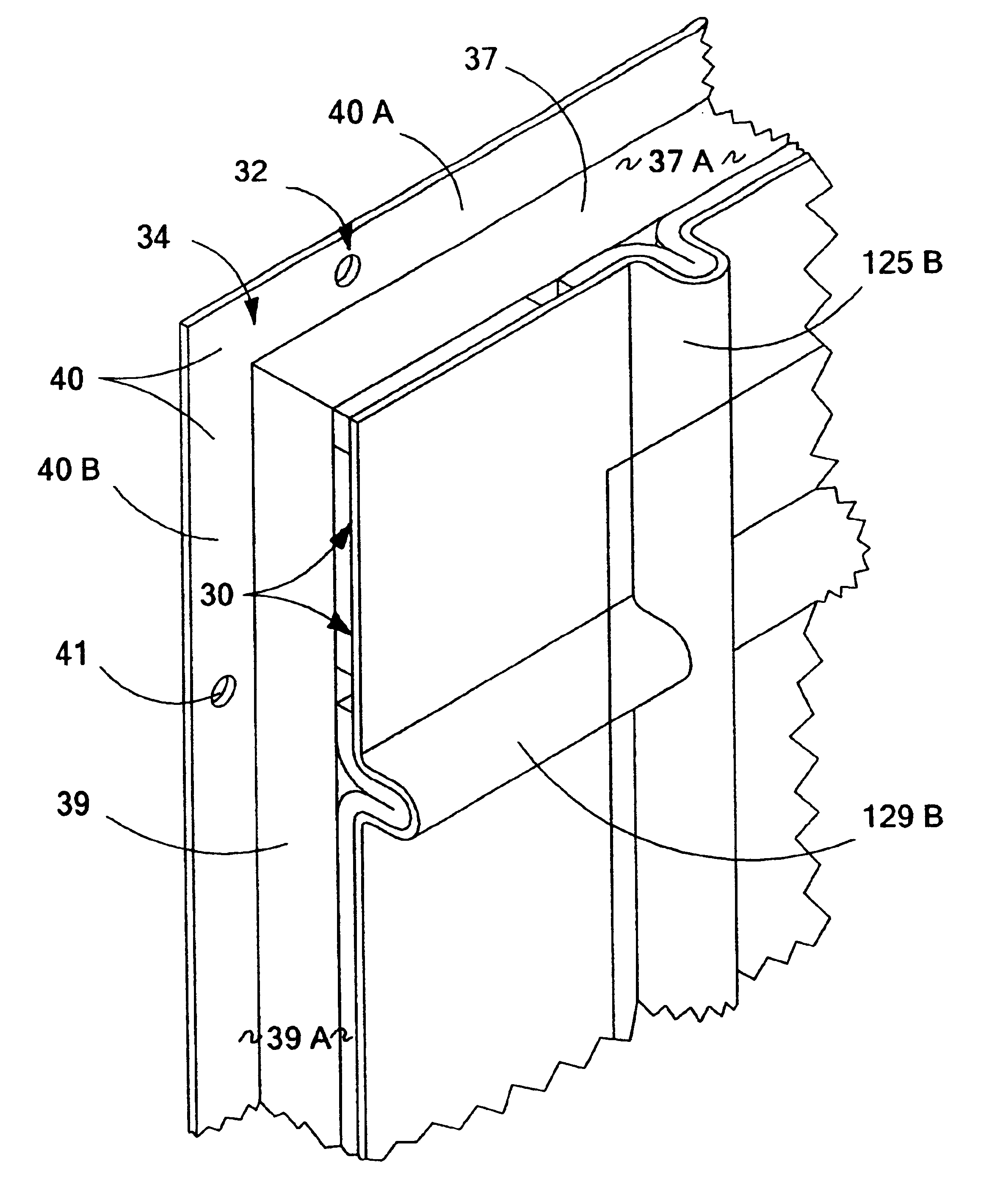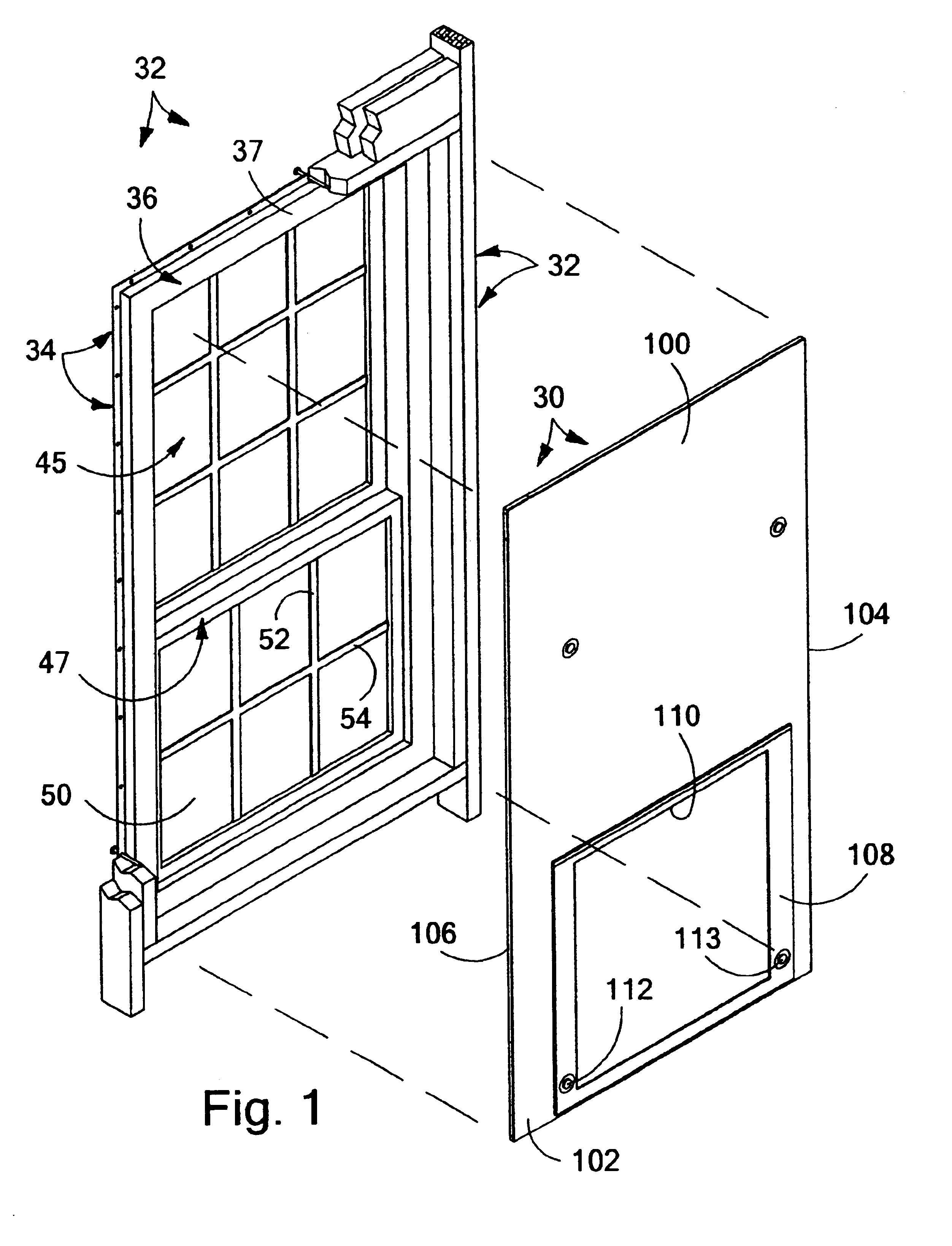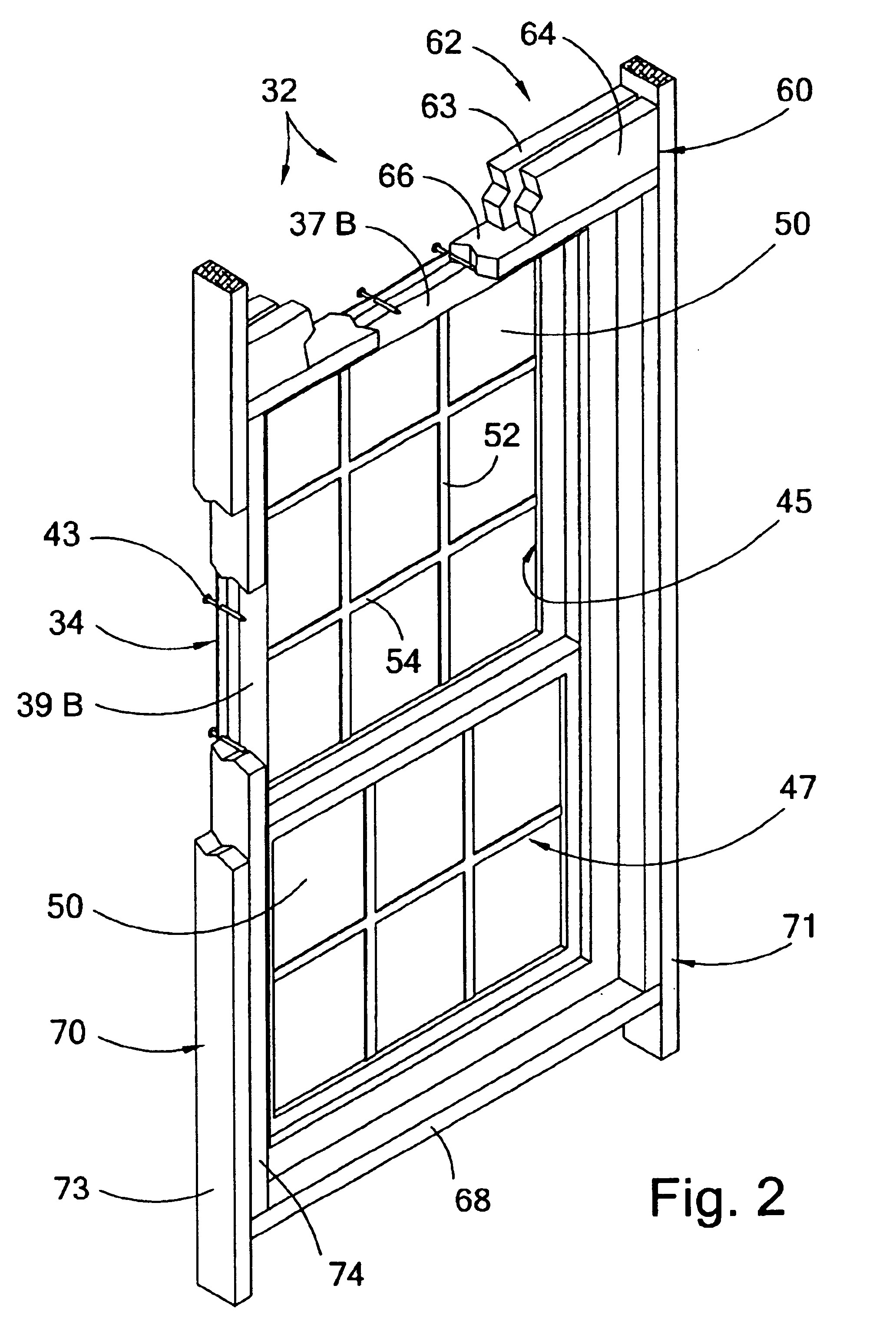Temporary protective shrouds for protecting windows and fixtures during construction
a technology for windows and fixtures, applied in the field of protective covers or masking shrouds, can solve the problems of labor shortage, shortage of raw materials, and burdensome time constraints placed on the typical contractor, and achieve the effect of convenient temporary opening of sash windows, quick and easy removal, and convenient adjustmen
- Summary
- Abstract
- Description
- Claims
- Application Information
AI Technical Summary
Benefits of technology
Problems solved by technology
Method used
Image
Examples
Embodiment Construction
Turning initially to FIGS. 1-6 of the appended drawings, my new protective window shroud has been generally designated by the reference numeral 30. It is adapted to be fitted to a conventional window assembly 32 during construction. Once fitted properly, as hereinafter described, frame construction around the window, including dry-wall construction and the like, proceeds non-destructively, and the window is protected from unwanted contact with dirt and debris. After interior construction is substantially completed, the shroud 30 may be quickly removed, revealing a clean and undamaged window fixture.
For informational purposes, the window assembly 32 comprises a conventional dual sash, fin frame window 34. A generally rectangular window frame 36 is formed from extruded aluminum pieces in a desired configuration, with a conventional size and aspect ratio. The upper horizontal span has been designated by the reference numeral 37, and that spans' upper surface has been designated by the ...
PUM
 Login to View More
Login to View More Abstract
Description
Claims
Application Information
 Login to View More
Login to View More - R&D
- Intellectual Property
- Life Sciences
- Materials
- Tech Scout
- Unparalleled Data Quality
- Higher Quality Content
- 60% Fewer Hallucinations
Browse by: Latest US Patents, China's latest patents, Technical Efficacy Thesaurus, Application Domain, Technology Topic, Popular Technical Reports.
© 2025 PatSnap. All rights reserved.Legal|Privacy policy|Modern Slavery Act Transparency Statement|Sitemap|About US| Contact US: help@patsnap.com



